Instruction
What happens to loft when shortening or lengthening a putter shaft?

During a round of golf, the percentage of all putts made is 43. I have mentioned in my earlier articles that the putting technique should be efficient and adjusted to your mobility limitation. With increased efficiency, the amount of mishits and also the amount of time spent on your short game will decrease. An inefficient technique will give you trouble to find time to maintain your feel on the greens. It will most certainly give you trouble when the pressure is high and you are nervous. Dave Pelz mentioned in his book “Dave Pelz´s Putting Bible” concerning what should master your putt motion:
“Supplying the power, which determines how fast and how far your putts will roll, from the muscles of your wrists, hands and fingers is bad. Wrist motion (hinging) causes putter face angle variations, and hand and wrist muscles tend to tighten up and not work well under even slight pressure.”
Suppose that you already have a pretty good putting technique without too much wrist motion and an impact angle close to 0 degrees.
In this article, I want to explain what can happen when cutting or lengthening your putter and neglecting adjusting your technique to your new putter specifications. The problem concerns the conflict between the forward press and correct dynamic loft at impact.
What is the “forward press?”
The use of the “forward press” is widely used and recommended by putting gurus and professionals. The purposes of the “forward press” are several, but the majority of golfers who use it want to “kick start” the putt motion, deloft the putter or get their hands in front of the ball.
However I want to define the “forward press” like this:
When the shaft is perpendicular to the ground, the putter loft is the same as the static loft of the putter. If the golfer leans the shaft forward, the loft of the putter decreases. The distance that the golfer pushes the shaft against the target from its perpendicular position is the “forward press.”
A golfer who uses the forward press will move his hands and the grip a certain distance before launching the putting motion. The distance will, in most cases, be the same even when the putter shaft is custom fitted to the golfers specifications. For example, a golfer who requires a 31-inch putter instead of the standard length (35 inches) most often uses the same technique concerning the distance of the forward press with the shorter putter as he/she did with the standard length putter. The degree on the putter loft will be delofted even more than with the standard length putter, however.
How much the distance of the forward press affects the putter loft depends on the length of the putter. The table below shows the degrees the static putter loft will be delofted when cutting your putter from 35 inches to 31 inches (and not adjusting your forward press distance):
As you can see, even a short forward press causes a negative dynamic loft. A 35-inch putter with 2 degrees loft and a 2-inch forward press will give the putter head a dynamic loft of -1.27 degrees.
The golfer has to compensate the negative dynamic putter loft during the putt motion with his/her putt technique. Otherwise the ball will be pushed down into the grass and probably lose its intended path and speed (it will be even worse if the grass is longer).
It is really easy to cut a putter shaft, but the “forward press” is harder to adjust so the dynamic loft at impact suits the putt technique.
Some tips on minimizing the possibility for addressing and putting the ball with negative putter loft:
- Most putter head designs are not so easy to address flat on the ground. My advice is to find a putter with wider sole and adjusted sole angle so the putter does not turn either way when you place the putter head on the ground.
- If you can use your thorax rotation without any lower body movement, then there is a possibility for more consistent putt motion with less variation of the dynamic loft at impact.
- Eliminate all wrist, hand and finger action in your putt motion.
- Buy a laser point gadget that can help you see where you aiming and if you are delofting the putter too much.
Laser Point Gadget
Laser tools for aiming are commonly used by many professional golfers and coaches. The best aspect with the laser point gadgets is the instant feedback on how you are aiming without help of some other person. Another good thing with the laser point gadget is also the possibility to verify what your dynamic loft at address is just before launching the putt motion. The best practice for this is to use the laser gadget indoors when aiming at a target on the floor mat. If you are forward pressing the putter too much at address, the laser point will be below the height of the laser point source.
A way to see your dynamic loft at impact is to use the laser point gadget and also video capture your target line and target. Then you can use the slow-motion function and easily find where the pointer appears at impact.
For more information on the laser point gadget, visit the site http://www.thesmartgolfer.com/
Conclusion
When changing the length of the putter you should also check your dynamic loft at impact to be sure that your technique can also produce the correct loft at impact with the new putter length.
If you would like to receive the chart with the loft and forward press distance, email me.
- LIKE11
- LEGIT3
- WOW1
- LOL2
- IDHT1
- FLOP3
- OB1
- SHANK1
Instruction
The Wedge Guy: The easiest-to-learn golf basic

My golf learning began with this simple fact – if you don’t have a fundamentally sound hold on the golf club, it is practically impossible for your body to execute a fundamentally sound golf swing. I’m still a big believer that the golf swing is much easier to execute if you begin with the proper hold on the club.
As you might imagine, I come into contact with hundreds of golfers of all skill levels. And it is very rare to see a good player with a bad hold on the golf club. There are some exceptions, for sure, but they are very few and very far between, and they typically have beat so many balls with their poor grip that they’ve found a way to work around it.
The reality of biophysics is that the body moves only in certain ways – and the particulars of the way you hold the golf club can totally prevent a sound swing motion that allows the club to release properly through the impact zone. The wonderful thing is that anyone can learn how to put a fundamentally sound hold on the golf club, and you can practice it anywhere your hands are not otherwise engaged, like watching TV or just sitting and relaxing.
Whether you prefer an overlap, interlock or full-finger (not baseball!) grip on the club, the same fundamentals apply. Here are the major grip faults I see most often, in the order of the frequency:
Mis-aligned hands
By this I mean that the palms of the two hands are not parallel to each other. Too many golfers have a weak left hand and strong right, or vice versa. The easiest way to learn how to hold the club with your palms aligned properly is to grip a plain wooden ruler or yardstick. It forces the hands to align properly and shows you how that feels. If you grip and re-grip a yardstick several times, then grip a club, you’ll see that the learning curve is almost immediate.
The position of the grip in the upper/left hand
I also observe many golfers who have the butt of the grip too far into the heel pad of the upper hand (the left hand for right-handed players). It’s amazing how much easier it is to release the club through the ball if even 1/4-1/2″ of the butt is beyond the left heel pad. Try this yourself to see what I mean. Swing the club freely with just your left hand and notice the difference in its release from when you hold it at the end of the grip, versus gripping down even a half inch.
To help you really understand how this works, go to the range and hit shots with your five-iron gripped down a full inch to make the club the same length as your seven-iron. You will probably see an amazing shot shape difference, and likely not see as much distance loss as you would expect.
Too much lower (right) hand on the club
It seems like almost all golfers of 8-10 handicap or higher have the club too far into the palm of the lower hand, because that feels “good” if you are trying to control the path of the clubhead to the ball. But the golf swing is not an effort to hit at the ball – it is a swing of the club. The proper hold on the club has the grip underneath the pad at the base of the fingers. This will likely feel “weak” to you — like you cannot control the club like that. EXACTLY. You should not be trying to control the club with your lower/master hand.
Gripping too tightly
Nearly all golfers hold the club too tightly, which tenses up the forearms and prevents a proper release of the club through impact. In order for the club to move back and through properly, you must feel that the club is controlled by the last three fingers of the upper hand, and the middle two fingers of the lower hand. If you engage your thumbs and forefingers in “holding” the club, the result will almost always be a grip that is too tight. Try this for yourself. Hold the club in your upper hand only, and squeeze firmly with just the last three fingers, with the forefinger and thumb off the club entirely. You have good control, but your forearms are not tense. Then begin to squeeze down with your thumb and forefinger and observe the tensing of the entire forearm. This is the way we are made, so the key to preventing tenseness in the arms is to hold the club very lightly with the “pinchers” — the thumbs and forefingers.
So, those are what I believe are the four fundamentals of a good grip. Anyone can learn them in their home or office very quickly. There is no easier way to improve your ball striking consistency and add distance than giving more attention to the way you hold the golf club.
More from the Wedge Guy
- The Wedge Guy: Golf mastery begins with your wedge game
- The Wedge Guy: Why golf is 20 times harder than brain surgery
- The Wedge Guy: Musings on the golf ball rollback
- LIKE85
- LEGIT13
- WOW6
- LOL1
- IDHT0
- FLOP4
- OB1
- SHANK8
Instruction
Clement: Stop ripping off your swing with this drill!

Not the dreaded headcover under the armpit drill! As if your body is defective and can’t function by itself! Have you seen how incredible the human machine is with all the incredible feats of agility all kinds of athletes are accomplishing? You think your body is so defective (the good Lord is laughing his head off at you) that it needs a headcover tucked under the armpit so you can swing like T-Rex?
- LIKE0
- LEGIT2
- WOW2
- LOL0
- IDHT0
- FLOP0
- OB0
- SHANK2
Instruction
How a towel can fix your golf swing

This is a classic drill that has been used for decades. However, the world of marketed training aids has grown so much during that time that this simple practice has been virtually forgotten. Because why teach people how to play golf using everyday items when you can create and sell a product that reinforces the same thing? Nevertheless, I am here to give you helpful advice without running to the nearest Edwin Watts or adding something to your Amazon cart.
For the “scoring clubs,” having a solid connection between the arms and body during the swing, especially through impact, is paramount to creating long-lasting consistency. And keeping that connection throughout the swing helps rotate the shoulders more to generate more power to help you hit it farther. So, how does this drill work, and what will your game benefit from it? Well, let’s get into it.
Setup
You can use this for basic chip shots up to complete swings. I use this with every club in my bag, up to a 9 or 8-iron. It’s natural to create incrementally more separation between the arms and body as you progress up the set. So doing this with a high iron or a wood is not recommended.
While you set up to hit a ball, simply tuck the towel underneath both armpits. The length of the towel will determine how tight it will be across your chest but don’t make it so loose that it gets in the way of your vision. After both sides are tucked, make some focused swings, keeping both arms firmly connected to the body during the backswing and follow through. (Note: It’s normal to lose connection on your lead arm during your finishing pose.) When you’re ready, put a ball in the way of those swings and get to work.

Get a Better Shoulder Turn
Many of us struggle to have proper shoulder rotation in our golf swing, especially during long layoffs. Making a swing that is all arms and no shoulders is a surefire way to have less control with wedges and less distance with full swings. Notice how I can get in a similar-looking position in both 60° wedge photos. However, one is weak and uncontrollable, while the other is strong and connected. One allows me to use my larger muscles to create my swing, and one doesn’t. The follow-through is another critical point where having a good connection, as well as solid shoulder rotation, is a must. This drill is great for those who tend to have a “chicken wing” form in their lead arm, which happens when it becomes separated from the body through impact.
In full swings, getting your shoulders to rotate in your golf swing is a great way to reinforce proper weight distribution. If your swing is all arms, it’s much harder to get your weight to naturally shift to the inside part of your trail foot in the backswing. Sure, you could make the mistake of “sliding” to get weight on your back foot, but that doesn’t fix the issue. You must turn into your trial leg to generate power. Additionally, look at the difference in separation between my hands and my head in the 8-iron examples. The green picture has more separation and has my hands lower. This will help me lessen my angle of attack and make it easier to hit the inside part of the golf ball, rather than the over-the-top move that the other picture produces.


Stay Better Connected in the Backswing
When you don’t keep everything in your upper body working as one, getting to a good spot at the top of your swing is very hard to do. It would take impeccable timing along with great hand-eye coordination to hit quality shots with any sort of regularity if the arms are working separately from the body.
Notice in the red pictures of both my 60-degree wedge and 8-iron how high my hands are and the fact you can clearly see my shoulder through the gap in my arms. That has happened because the right arm, just above my elbow, has become totally disconnected from my body. That separation causes me to lift my hands as well as lose some of the extension in my left arm. This has been corrected in the green pictures by using this drill to reinforce that connection. It will also make you focus on keeping the lead arm close to your body as well. Because the moment either one loses that relationship, the towel falls.


Conclusion
I have been diligent this year in finding a few drills that target some of the issues that plague my golf game; either by simply forgetting fundamental things or by coming to terms with the faults that have bitten me my whole career. I have found that having a few drills to fall back on to reinforce certain feelings helps me find my game a little easier, and the “towel drill” is most definitely one of them.
- LIKE12
- LEGIT2
- WOW2
- LOL0
- IDHT0
- FLOP2
- OB0
- SHANK8
-

 19th Hole1 week ago
19th Hole1 week agoDave Portnoy places monstrous outright bet for the 2024 Masters
-

 19th Hole3 weeks ago
19th Hole3 weeks agoThings got heated at the Houston Open between Tony Finau and Alejandro Tosti. Here’s why
-

 19th Hole1 week ago
19th Hole1 week agoTiger Woods arrives at 2024 Masters equipped with a putter that may surprise you
-

 19th Hole2 weeks ago
19th Hole2 weeks agoReport: Tiger Woods has ‘eliminated sex’ in preparation for the 2024 Masters
-

 19th Hole5 days ago
19th Hole5 days agoTwo star names reportedly blanked Jon Rahm all week at the Masters
-

 19th Hole4 days ago
19th Hole4 days agoNeal Shipley presser ends in awkward fashion after reporter claims Tiger handed him note on 8th fairway
-

 19th Hole3 days ago
19th Hole3 days agoReport: LIV Golf identifies latest star name they hope to sign to breakaway tour
-

 19th Hole2 weeks ago
19th Hole2 weeks agoAddiction, spinal fusion, and scam artists – Everything Anthony Kim revealed in candid interview with David Feherty

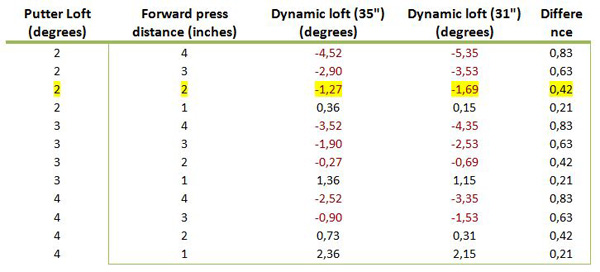
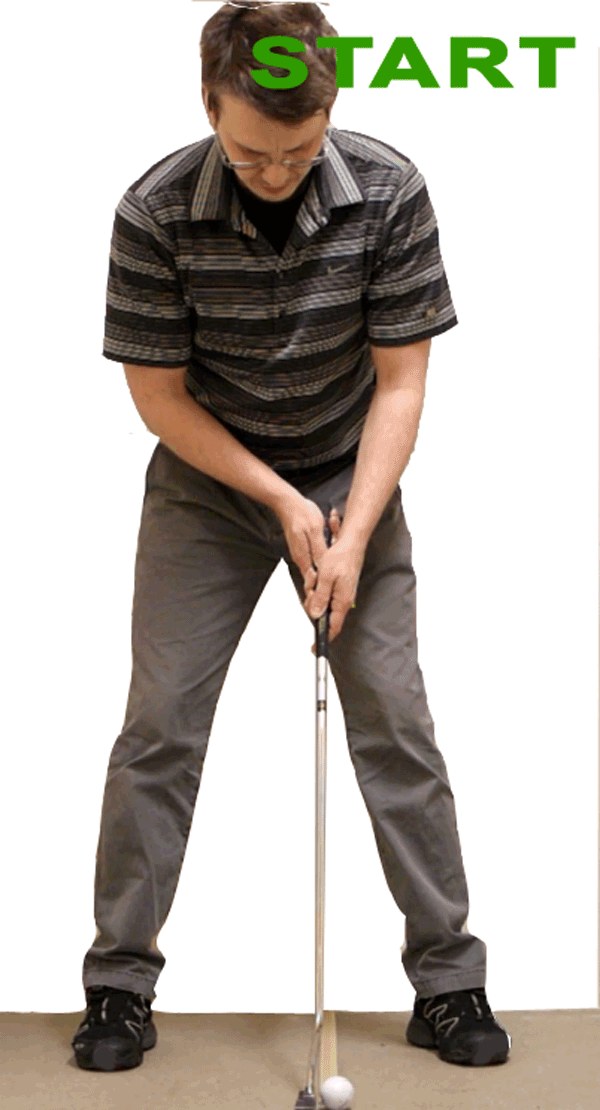
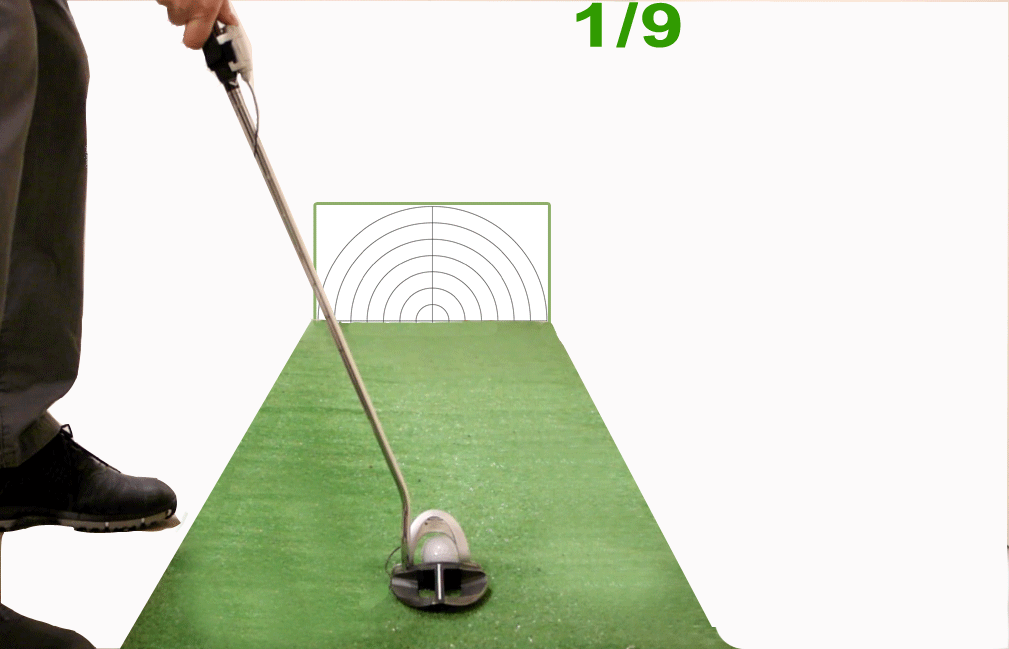


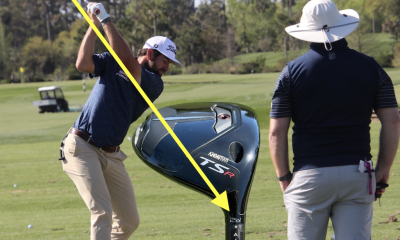



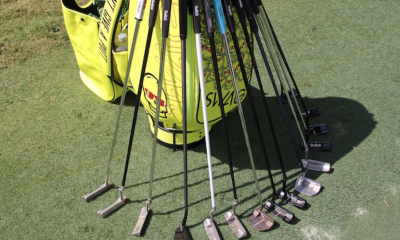

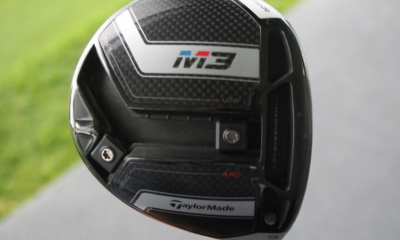

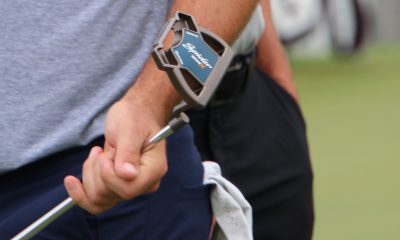















froneputt
Mar 29, 2014 at 1:02 am
I don’t see the advantage of the forward press — it’s old school and a way to jump-start the rhythm of the stroke. BUT adjusting loft may also adjust the face slightly — I think you’re introducing error. Is it one reason Rory goes hot and cold? I prefer no forward press and no freezing over the putt. Other professional instructors have advised to feel almost imperceptible movement as you are addressing the ball so you are not ever “frozen” over a putt – you retain your athleticism, always keeping an eye on your line and pulling the trigger without lingering.
Rich
Mar 28, 2014 at 6:32 am
Are you guys serious? Why would you want to have all this crap in your head when you’re over the ball. Step up, line up and putt. It’s that simple
ddgg
Mar 26, 2014 at 7:36 pm
that’s a nice looking putter
Gary
Mar 26, 2014 at 3:14 pm
Some authors have noted the “shaft angle illusion”, which is when you take your putting stance and look down at a putter shaft that appears vertical, but isn’t in reality. This is bad, since you want your rise angle to be greater than dynamic loft to put a good roll on the ball. I think pros are forward pressing to ensure that the putter shaft is vertical and to ward off adding loft at impact through backward shaft lean.
billy
Mar 26, 2014 at 2:30 pm
I agree the forward press seems odd and does not work for me either however I see many of the top players in the world use it so it must have merit on some level.
Ed LeBeau
Mar 26, 2014 at 11:57 am
Simon, the advantage of the forward press has eluded me. When I see players use it, I see them align the putter, take their stance, and then forward press. If you use the alignment laser you find that it is near impossible to forward press without loosing the setup alignment. What are your thoughts about this?
Simon Selin
Mar 26, 2014 at 3:14 pm
Ed, Thanks for your comment. My view of the forward press follows your opinion. The more actions with your hands before impact, the more possibilities for errors such as alignment. However the forward press can help people “kick start” the putt motion instead of freezing over the golf ball. Another thing that the forward press can help the golfer with is the hinging and pronation of the right wrist (for RH players).